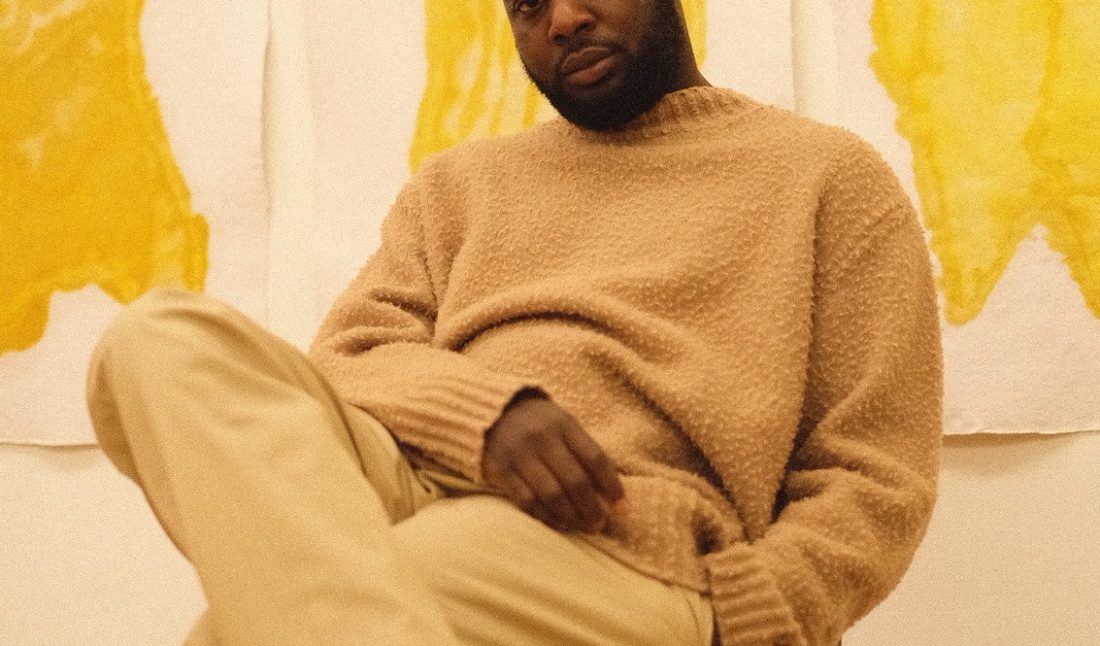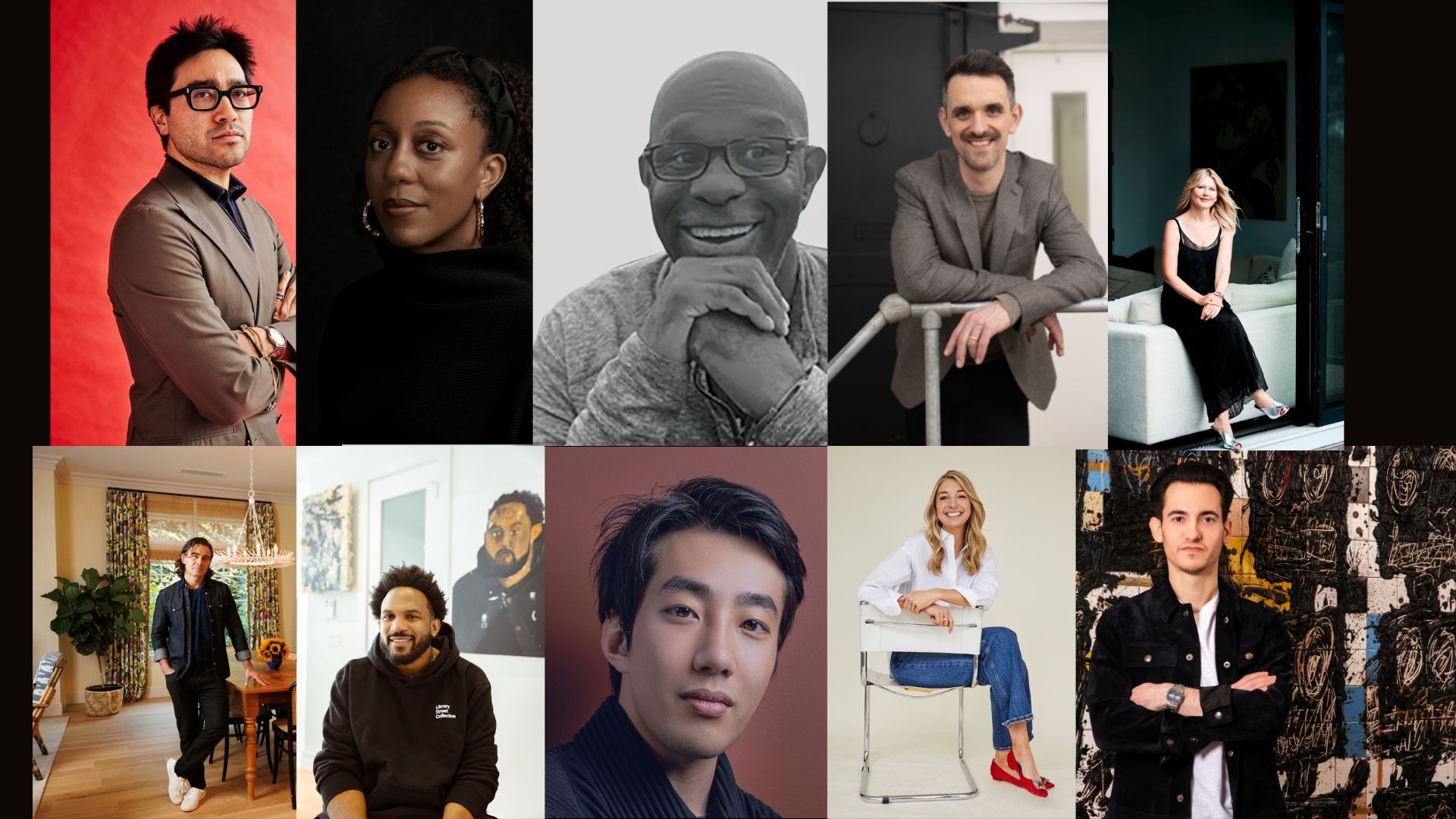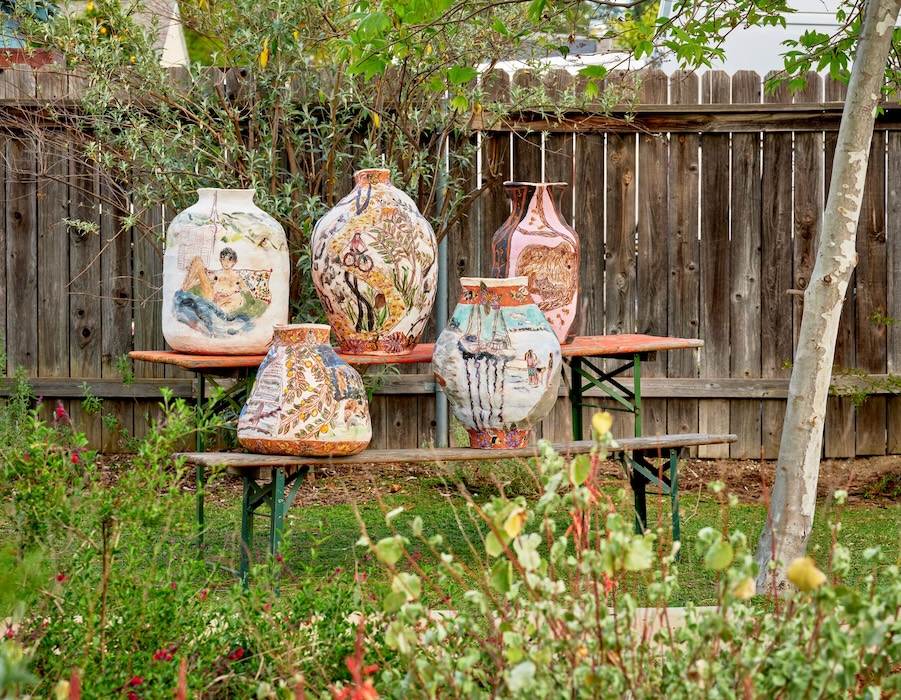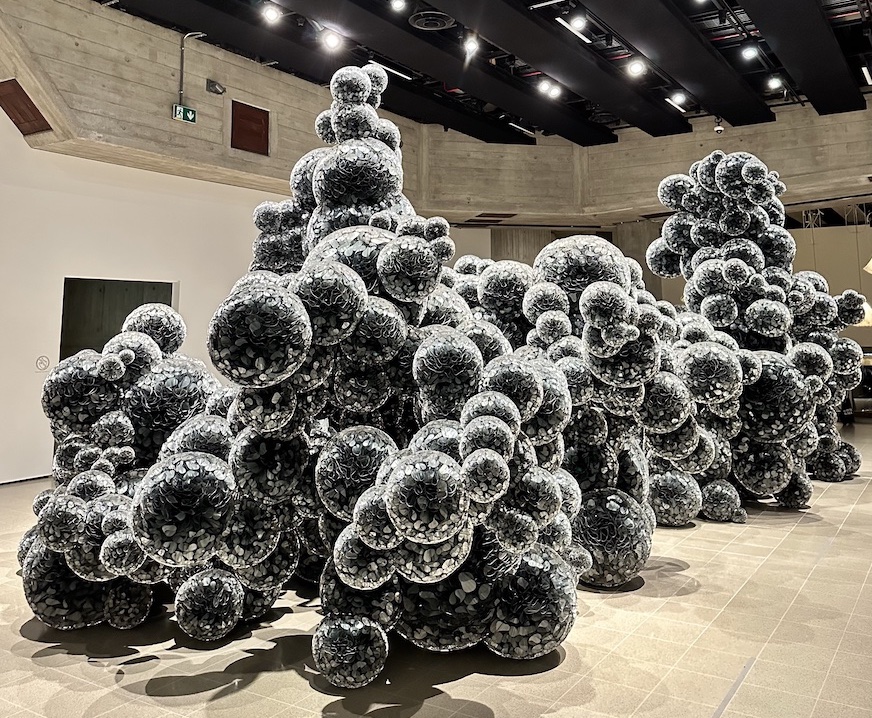Anthony Akinbola’s exhibition, “Natural Beauty,” opened this week at Sean Kelly Gallery in New York. On view through October 22, the solo show of new works spotlights Brooklyn-based artist’s trademark camouflage paintings as well as single and multi-panel artworks that employ the du rag as an essential inspiration and component. In 2018, the visionary created a large-scale wall collage for The Queens Museum. In 2019, Akinbola received the Van Lier Fellowship, and was selected as the eighth Museum of Arts and Design Artist Fellow.
Akinbola is multi-dimensional in his process—exploring, connecting, and contrasting elements of his own Nigerian American identity with familiar, everyday materials such as palm oil and hair brushes. The artist reckons with themes ranging from modern consumption to assimilation, and closely examines the ways in which Black culture is commodified. In a style all his own, Akinbola staples, sews, and paints his tapestries, playing with tradition, stereotypes, and color theory. The result is significant; Akinbola’s works are vivid in pigment, connotation, and historical magnitude.
Whitewall had the opportunity to speak to the artist about the power of objects, reconciling with identity, and bringing the multi-faceted Black experience into the light.
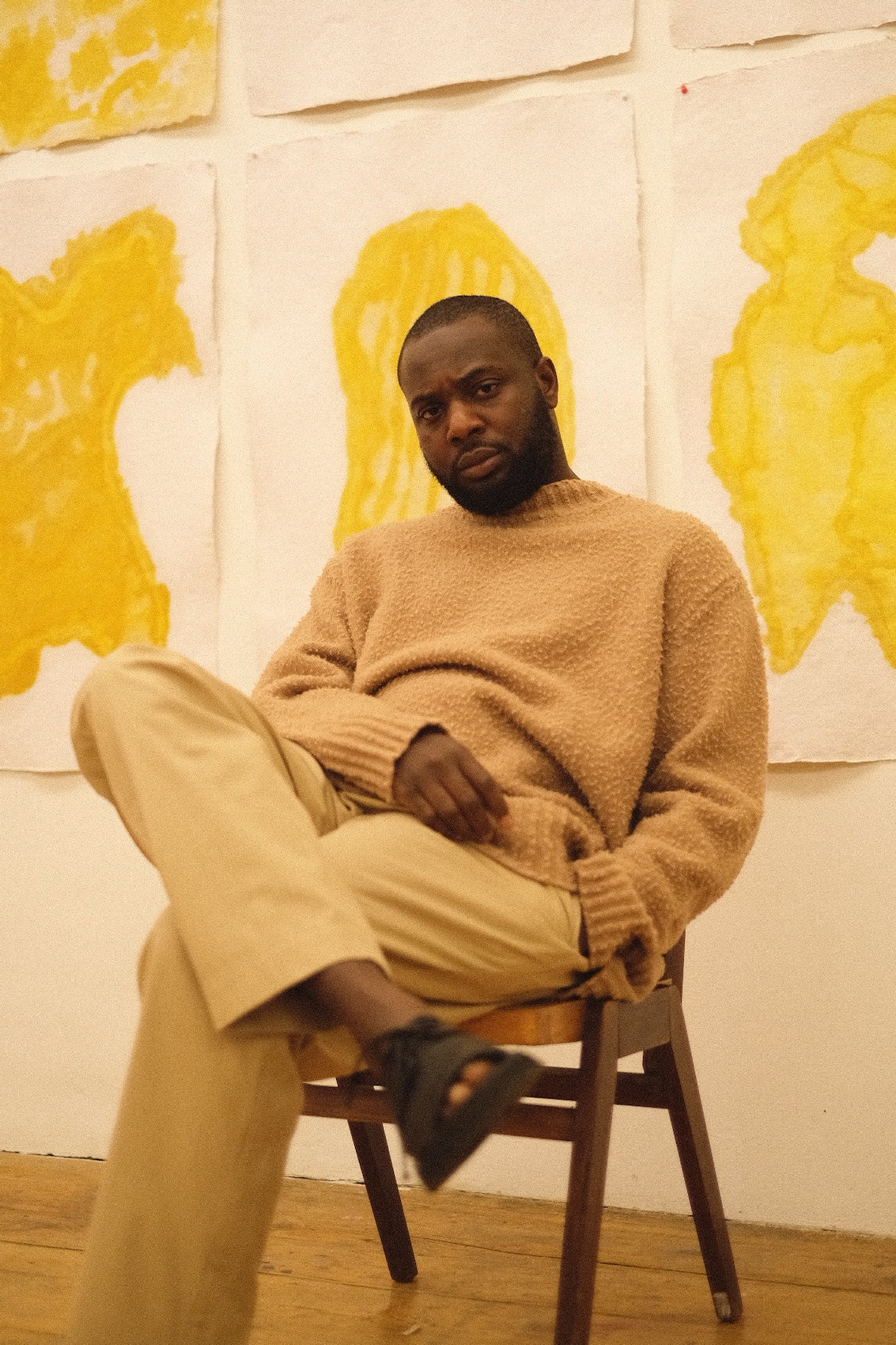 Photo by Fredrick Nwosu, courtesy of Anthony Akinbola and Sean Kelly Gallery, New York.
Photo by Fredrick Nwosu, courtesy of Anthony Akinbola and Sean Kelly Gallery, New York.
WHITEWALL: What was the starting point and inspirations for your newest exhibition, “Natural Beauty”?
ANTHONY AKINBOLA: This exhibition “Natural Beauty” was inspired by further inquiry into some of the themes I had explored in an earlier exhibition at the John Michael Kohler Arts Center in January of 2021. Mainly the subject of “fetish.” I was interested in the history of the word itself and its relationship to contemporary culture. There is an interesting parallel that exists between the traditional connotation of the word and its more practical application in the west. This show is further exploring the value of objects in our day to day and how it fluctuates over time and through communities.
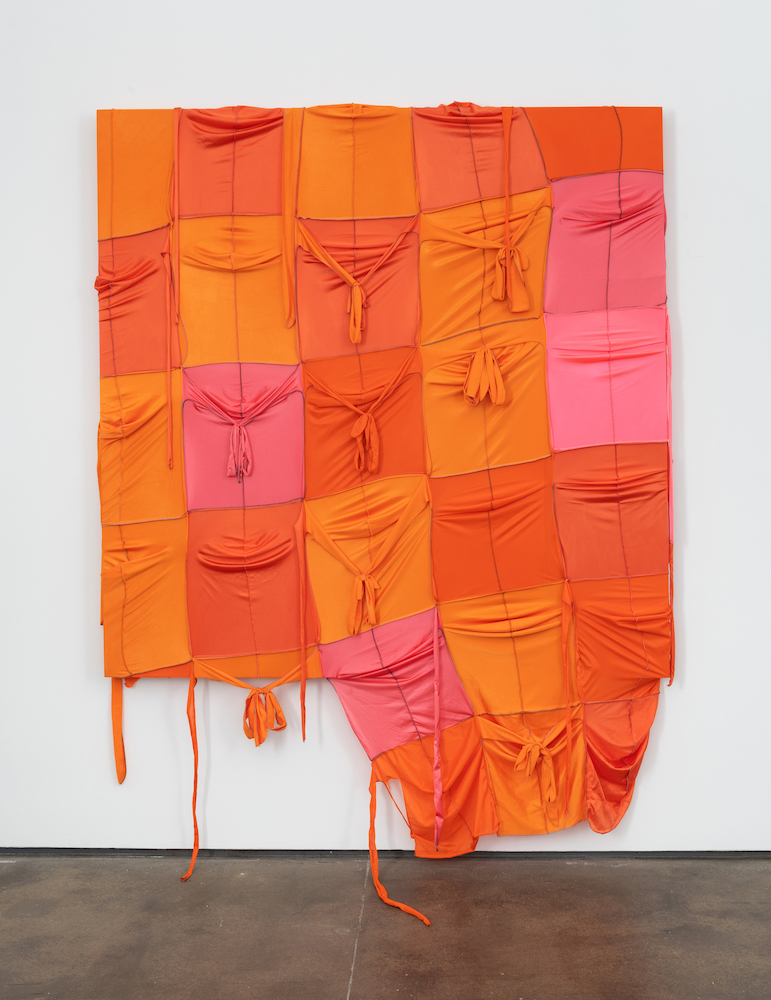 Anthony Akinbola, “White Bronco,” 2022, 110 x 72 in., durags, acrylic on wood panel; © Anthony Akinbola, photo by Adam Reich, courtesy of Sean Kelly Gallery, New York.
Anthony Akinbola, “White Bronco,” 2022, 110 x 72 in., durags, acrylic on wood panel; © Anthony Akinbola, photo by Adam Reich, courtesy of Sean Kelly Gallery, New York.
WW: Using the du rag as your primary material, you have stated that for you it represents a readymade object that engages the conceptual strategies of Marcel Duchamp and other significant artistic predecessors. How are these strategies vital to your own artworks?
AA: I like using the du rag because it has a strong presence. It’s a loaded object full of potential. You could easily talk about everything from race relationships and respectability to mass production and labor. There is a basic consideration of me working with objects that are familiar, things that I can find meaning in myself. I would believe these are some of the considerations most of those that came before me had as well. But I also think as humans we’re constantly evaluating objects in this way, giving and reassigning significance. I’m interested in fully engaging that impulse.
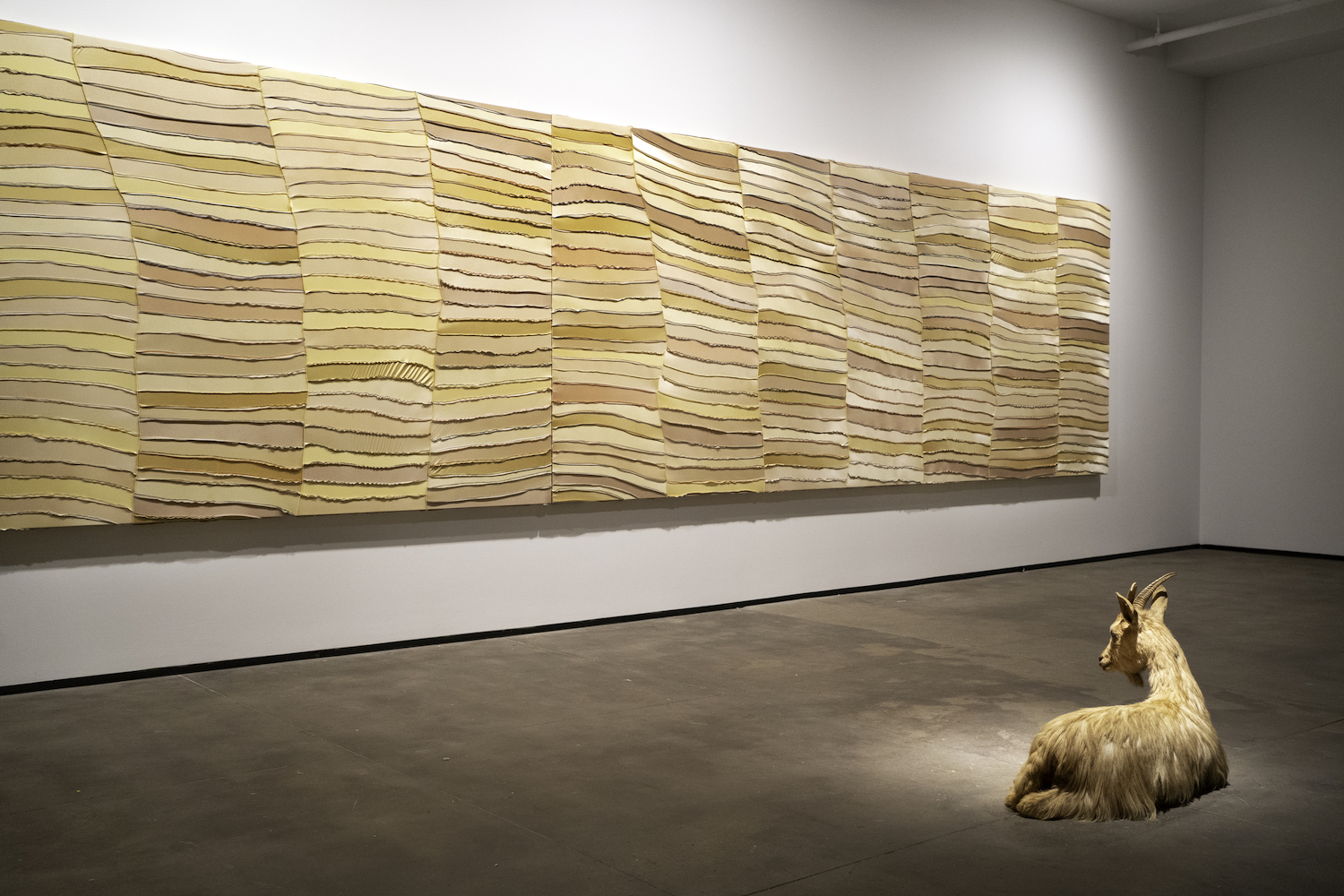 Installation view of Anthony Akinbola’s “Natural Beauty,” photo by Robert Spring, courtesy of Sean Kelly Gallery, New York.
Installation view of Anthony Akinbola’s “Natural Beauty,” photo by Robert Spring, courtesy of Sean Kelly Gallery, New York.
WW: The show includes your signature “camouflage” paintings. What does the concept of camouflage mean to you as an artist? How did you begin implementing it into your projects?
AA: I had titled this series “Camouflage” when I first started the body of work because I believed the concept of camouflage existed in various elements of the work. The inception of the du rag itself is directly associated with western beauty standards and the attempt of assimilation as means of survival in a white America. The garment is used to physically straighten and redirect hair growth for a desired “silky” smooth texture. Sammy Davis Jr. is a prime example of what could be achieved with a du rag and some grease. As I continued, I noticed there was also camouflage in the overall composition of the work, the material being lost in the overall form of the work. It felt like “Camouflage” was an appropriate title.
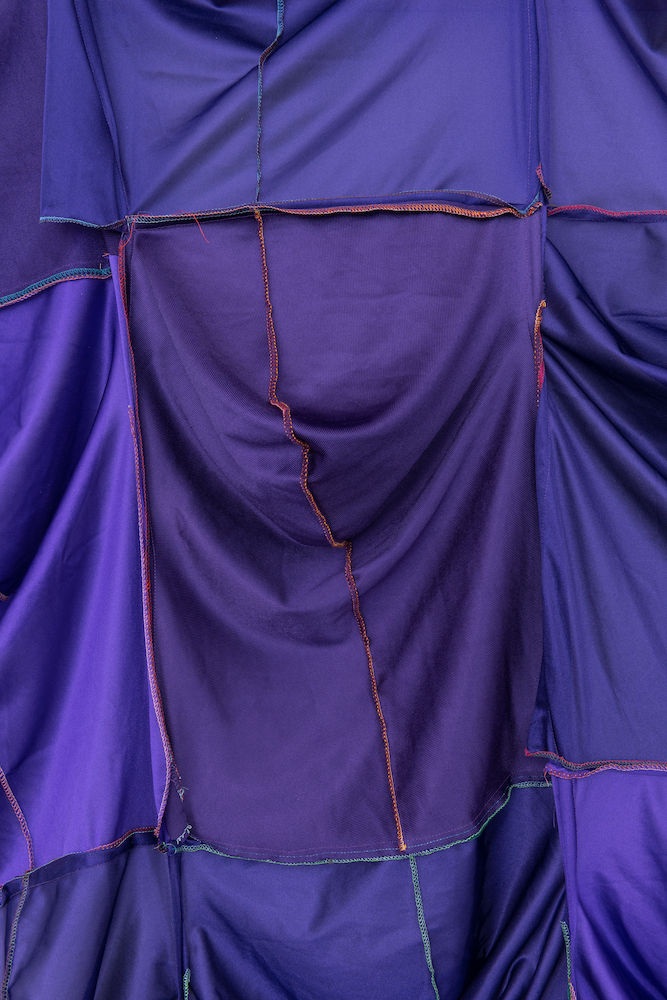 Anthony Akinbola, “Lift Every Voice,” 2022, 149 x 73 1/2 in., durags, acrylic on wood panel; © Anthony Akinbola, photo by Adam Reich, courtesy of Sean Kelly Gallery, New York.
Anthony Akinbola, “Lift Every Voice,” 2022, 149 x 73 1/2 in., durags, acrylic on wood panel; © Anthony Akinbola, photo by Adam Reich, courtesy of Sean Kelly Gallery, New York.
WW: How does your experience as a first-generation American, as well as your time growing up in both Missouri and Nigeria, influence your artwork?
AA: I think a lot of my time is spent thinking how to mitigate the distance between objects. I think when I first started making work, the focus was more about my identity and reconciling that but now I try to apply that train of thought to objects, symbols, and just general things I come into contact with day to day. Don’t get me wrong, it’s still present but as I continue it is communicated in more abstract ways.
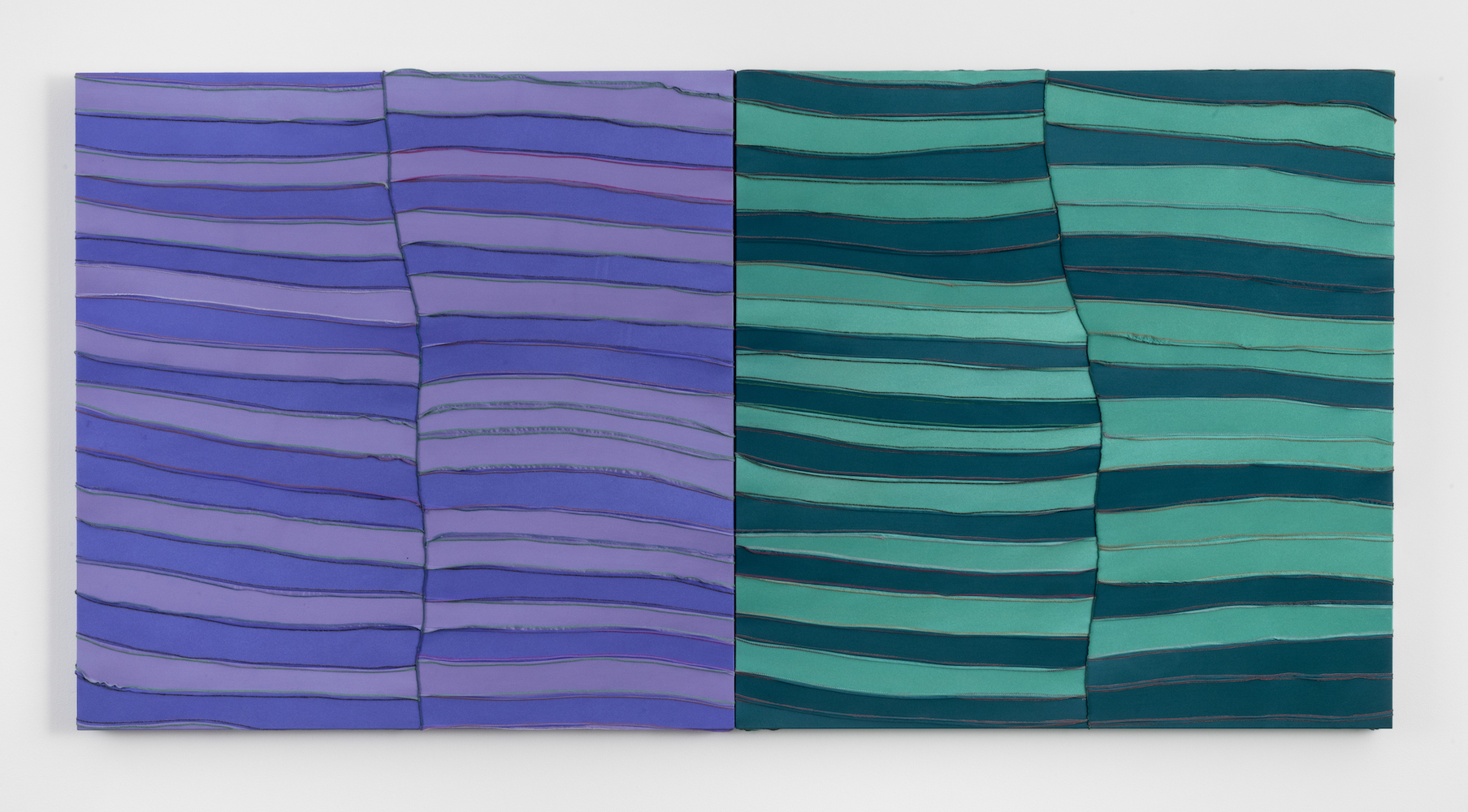 Anthony Akinbola, “Camouflage Study Lilac/Green”, 2022, 48 x 96 in., durags, acrylic on wood panel; © Anthony Akinbola, photo by Adam Reich, courtesy of Sean Kelly Gallery, New York.
Anthony Akinbola, “Camouflage Study Lilac/Green”, 2022, 48 x 96 in., durags, acrylic on wood panel; © Anthony Akinbola, photo by Adam Reich, courtesy of Sean Kelly Gallery, New York.
WW: How do you combine and contrast varying elements of color to explore the intricacies of identity?
AA: My black monochrome paintings are the best example of this comparison. There is a range of black tones that exist in them based on the different brands of du rags. I usually source these things from different beauty supply stores around the city so there’s always a variety. Blackness has always been seen as flat in America and I think these black pieces speak to the range of the experience itself.
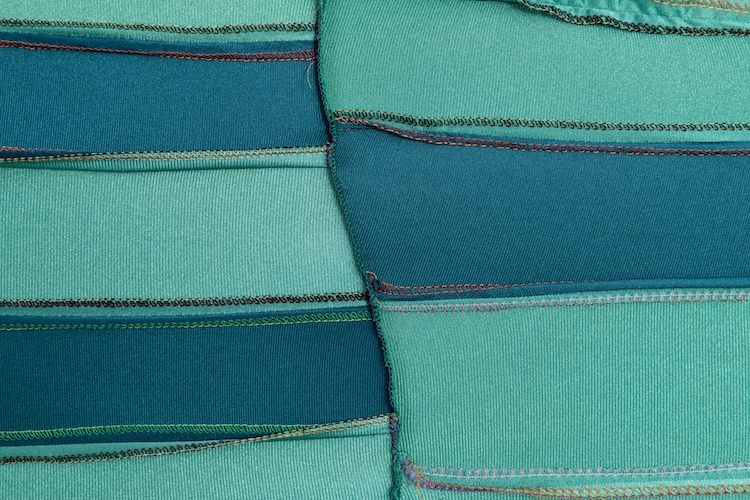 Anthony Akinbola, “Camouflage Study Lilac/Green”, 2022, 48 x 96 in., durags, acrylic on wood panel; © Anthony Akinbola, photo by Adam Reich, courtesy of Sean Kelly Gallery, New York.
Anthony Akinbola, “Camouflage Study Lilac/Green”, 2022, 48 x 96 in., durags, acrylic on wood panel; © Anthony Akinbola, photo by Adam Reich, courtesy of Sean Kelly Gallery, New York.
WW: You will be participating in the upcoming group exhibition at Kunsthaus Graz in Austria, “Faking The Real: The Art of Enticement.” What pieces of yours will be included in this show? How do you view your works in relation to the selling, manipulating and celebrating of graphic design, media images, and art?
AA: The piece is a plastic bag from Lords Exotic SuperMarket with a receipt of a purchase I made from 2021 inside it. The bag is mounted off the wall. There was something about displaying the object as is that was exciting for me when I was preparing the show it was going to be in. The simplicity of representing commerce through presenting the plastic shopping bag as is has a direct connection to the readymade. A lot of times the material I use is purchased so I wanted to reflect that through the object.
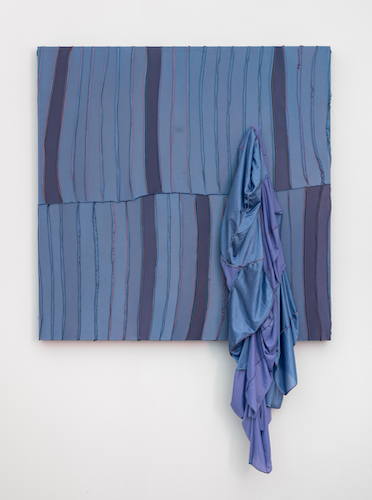 Anthony Akinbola, “Untitled,” 2022, 70 x 48 in., durags, acrylic on wood panel; © Anthony Akinbola, photo by Adam Reich, courtesy of Sean Kelly Gallery, New York.
Anthony Akinbola, “Untitled,” 2022, 70 x 48 in., durags, acrylic on wood panel; © Anthony Akinbola, photo by Adam Reich, courtesy of Sean Kelly Gallery, New York.
WW: Material plays a vital role in your artistry. You spent three past four years exploring the use of palm oil beyond cooking, and developed an interest in shell casings after discovery in Belgium during a 2017-2019 residency at The Verbeke Foundation. Can you describe some of the important ways in which you explore and experiment with materials in your artwork, and the deeper meanings of these experimentations?
AA: A lot of it comes from collecting. I am constantly hoarding material until I find a purpose for it, it may be that I have something sitting in the studio for months or years before it becomes of use if at all. I feel like it’s half play, half critical thinking and you end up at a destination eventually.
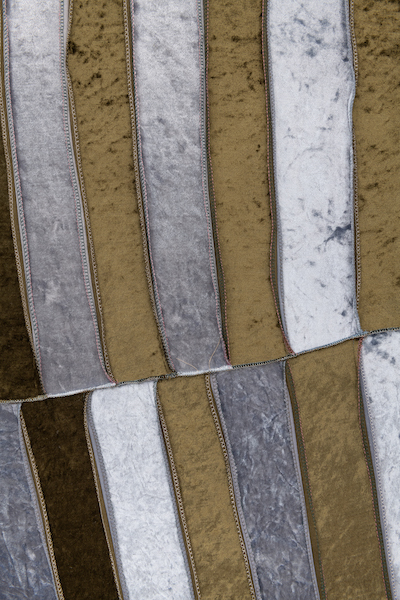 Anthony Akinbola, “Untitled,” 2022, 36 x 36 in., durags, acrylic on wood panel; © Anthony Akinbola, photo by Adam Reich, courtesy of Sean Kelly Gallery, New York.
Anthony Akinbola, “Untitled,” 2022, 36 x 36 in., durags, acrylic on wood panel; © Anthony Akinbola, photo by Adam Reich, courtesy of Sean Kelly Gallery, New York.
WW: You have stated that certain bodies of work become different pieces entirely as they progress. Have you changed the way in which you initially create based on these changes over time?
AA: Nah, I kind of just do what feels right. It’s always subject to change, I don’t really think about that when I’m making things.
 Photo by Fredrick Nwosu, courtesy of Anthony Akinbola and Sean Kelly Gallery, New York.
Photo by Fredrick Nwosu, courtesy of Anthony Akinbola and Sean Kelly Gallery, New York.






